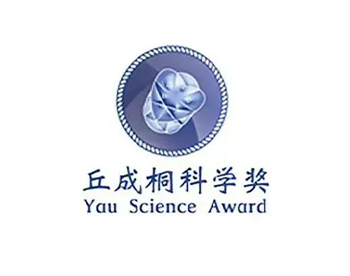Thermo Fisher Junior Innovators Challenge 2025–2026: A Complete Guide for Students and Educators
The Thermo Fisher Scientific Junior Innovators Challenge (JIC) has become one of the world’s most prestigious STEM competitions for middle school students. Originally launched in 2010 as the Broadcom MASTERS, the event was rebranded in 2023 after Thermo Fisher Scientific took over sponsorship. Often called the “Nobel Prize for middle schoolers,” it serves as the global counterpart to the International Science and Engineering Fair (ISEF), focusing on encouraging students to discover research ideas from everyday life.
The 2025–2026 finals will take place in Washington, D.C., from October 24–29, 2025, bringing together more than 2,000 young innovators from over 50 countries.
Who Can Participate
Eligibility for the JIC is strictly defined to ensure fairness and academic rigor.
Grade level: Open to students in grades 6–8. While some national science organizations limit participation for students under 15, international students are not bound by this restriction.
Nomination route: Students must first compete in an affiliated local or national science fair and place within the top 10 %. In the U.S., that typically means state-level science fairs; in China, events such as the National Youth Science and Technology Innovation Competition or Yingcai Program are recognized pathways.
Individual or team entries: Each student may submit one project, either individually or in a team of up to three. Team members must file separate applications detailing their own research contributions.
Ethics and compliance: Projects involving human or animal subjects must obtain ethics approval at least six months in advance and follow all relevant national regulations.
Application Timeline and Process
The 2025–2026 application window opens February 1, 2025, and all submissions are due by June 11, 2025, 8 p.m. ET.
Required materials include a complete research report (background, methods, results, and discussion), an individual or team application form, one to two letters of recommendation from teachers or mentors, and a new “research log verification” section that includes original data, code repositories, or lab notebooks to confirm authenticity.
Competition Stages:
- Preliminary Round (July–August 2025) – Online judging of reports and videos. Top 300 participants announced on September 3.
- Semifinal Round (Mid-September 2025) – Online presentations and Q&A sessions with judges. Finalists announced September 17.
- Final Week (October 24–29, 2025) – In-person exhibition in Washington, D.C., featuring project displays, live demonstrations, and interviews with scientists.
Awards and Recognition
The total prize pool for 2025–2026 is USD $250,000, rewarding both excellence and long-term development potential.
Top Honors:
- ASCEND Award – $25,000 cash plus $10,000 research fund and an ISEF visit. Winners also gain access to Thermo Fisher’s professional laboratories; the 2024 champions, for instance, worked at a Boston gene-editing lab.
- Special Awards (each $10,000): Broadcom Coding with Commitment Award, DoD STEM Talent Award, Lemelson Invention Award, and Robert Wood Johnson Foundation Health Promotion Award.
Category Awards:
Winners in Science, Technology, Engineering, Mathematics, and the interdisciplinary “Technology Enhances the Arts” (TECA) track receive:
- 1st Place – $3,500
- 2nd Place – $2,500
All category winners also receive an iPad to support their future studies.
Additional Recognition:
All finalists receive $500 and funded travel for one parent or guardian. Corporate partners such as Microsoft and Intel sponsor internships, patent-application support, and innovation grants. Exceptional participants often earn formal recommendation letters from judges—valuable for future academic applications.
Why JIC Matters: Beyond Prizes
The JIC is more than a competition—it’s an internationally recognized credential for young researchers.
Academic Credibility: Operated by the Society for Science, which also manages ISEF and the Regeneron STS, JIC follows world-class judging standards. MIT lists it among its recommended pre-college competitions, and Oxford University includes JIC results as evidence of research ability in its 2025 STEM admissions guide.
Global Reach and Alumni Impact: Over 150,000 students have participated since inception, with alumni networks spanning 50 countries. JIC winners often join global scientific projects—such as the 2025 Arctic Ecological Monitoring Program—ahead of their peers.
Pathway to Academic Success: More than 60 % of JIC winners later attend elite U.S. private high schools like Phillips Exeter Academy. Their Ivy League admission rate is triple that of typical applicants. In 2024, for example, Chinese student Zhang Yuxuan leveraged his JIC Top 30 project to earn offers from both MIT and Stanford.
Career and Research Development: Top 30 participants enter the Young Scientists Mentorship Program, guided by Nobel laureates or leading industry experts. Many go on to internships or receive up to $20,000 in “JIC Innovation Fund” grants to commercialize their research—like the 2023 winner whose skin-cancer-prevention project reached clinical trials.
Skills Students Build Along the Way
Preparing for JIC helps students develop full-spectrum research abilities:
- Literature review: Analyzing top journals such as Nature and Science.
- Experimentation and data modeling: Using Python or MATLAB for simulations; new virtual-lab options via Thermo Fisher’s cloud platform allow safe testing of high-risk experiments.
- Science communication: Turning findings into educational videos or teaching tools—like the 2024 Math Group winner’s “Algebra Visualization App” now used in several U.S. schools.
Quick FAQ
Can students from different schools form a team?
Yes. They may collaborate across schools but must register under one school’s name and define each member’s role clearly.
How can results be checked?
Regional results appear four weeks post-event; global-final results release mid-October 2025 via the official JIC website. Winners receive digital certificates and medals.
Are travel grants available?
Yes. Foundations such as the Choi Jung-hyun Academic Institute and national science associations (like CAST in China) offer travel and research stipends for selected finalists.
What about academic integrity?
All applicants must submit logs, raw data, and mentor recommendations. Any violation leads to disqualification and a three-year institutional ban. The official website provides a free originality-check tool.
In Short:
The Thermo Fisher Junior Innovators Challenge is not just a competition—it’s a launchpad for the next generation of scientists. For motivated middle schoolers seeking to merge creativity, research, and real-world impact, JIC 2025–2026 is the ultimate stage to shine.





